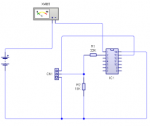a.a.mcmahon
New Member
Hello!
I'm using the Microbot for a project designed to go around a factory/home/warehouse and stop infrequently to scan (via PIR) for intruders...
Line following has been great for ages with no problems. Now the red light I think seems to be dimmer and it's not following lines. After syntaxing and debugging I found the module to be reading from ~255 when raised in the air and when covered with my infer it is about 250ish. If I put my super bright LED iPhone flashlight against it I can get it to read ~10 even 0 on the debug. I have a feeling that some voltage has been lost to the LED on the module. Ie disconnected everything bar the module. Reattached it and replaced the power supply with very expensive fresh batteries even!
Anyone else having this problem or know what I could do about it?
Any help would be great fully appreciated!
I'm using the Microbot for a project designed to go around a factory/home/warehouse and stop infrequently to scan (via PIR) for intruders...
Line following has been great for ages with no problems. Now the red light I think seems to be dimmer and it's not following lines. After syntaxing and debugging I found the module to be reading from ~255 when raised in the air and when covered with my infer it is about 250ish. If I put my super bright LED iPhone flashlight against it I can get it to read ~10 even 0 on the debug. I have a feeling that some voltage has been lost to the LED on the module. Ie disconnected everything bar the module. Reattached it and replaced the power supply with very expensive fresh batteries even!
Anyone else having this problem or know what I could do about it?
Any help would be great fully appreciated!

